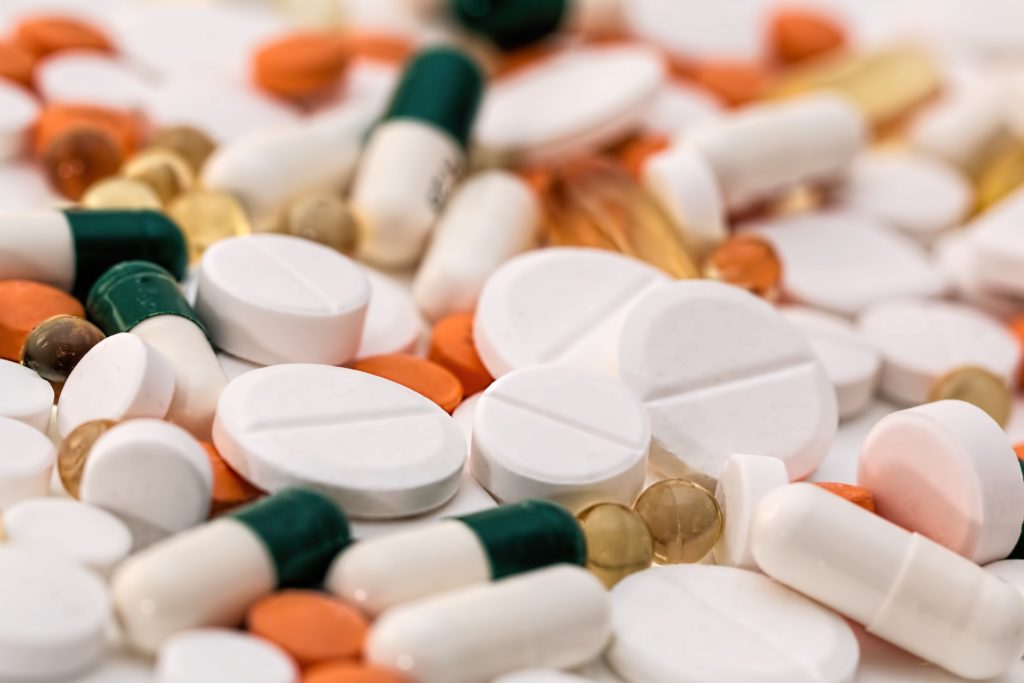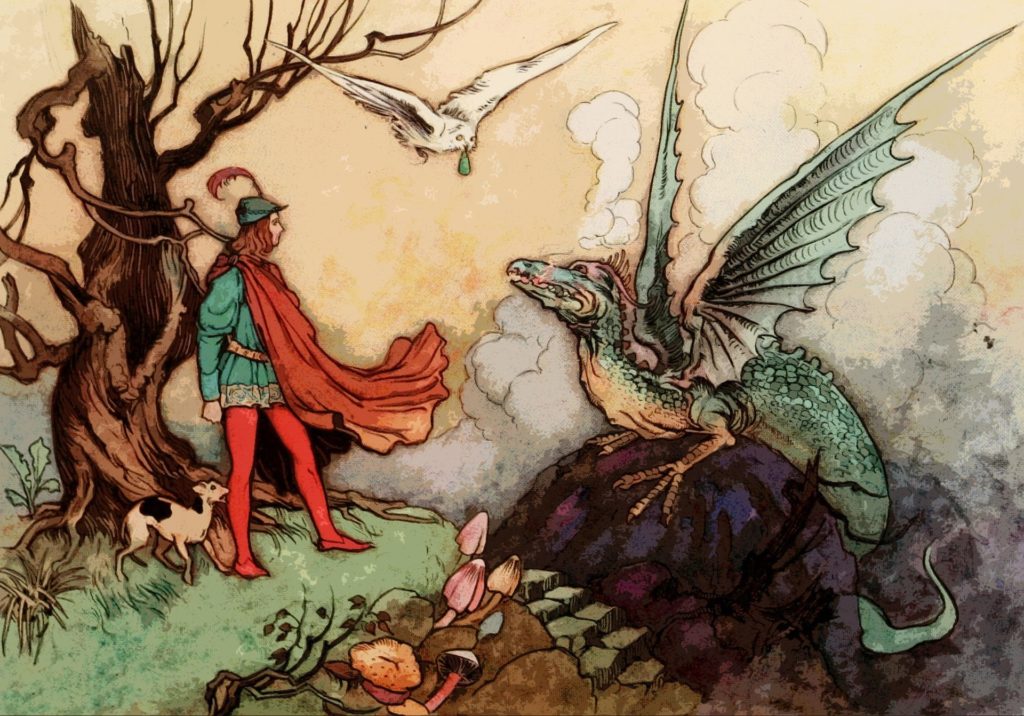A hypothetical for you: you and your friend, Dylan are going to a party comprised mostly of people that Dylan knows. You guys get there and stand around talking to Dylan’s friend, Matt. Things are going well, but soon enough, anatomy strikes, and Dylan has to go to the bathroom. Your anchoring extrovert has left you alone with Matt.
Your heart sinks, your pupils constrict to needle points, and you go on a tear through your mind’s files trying to remember how to carry on a conversation, looking for anything socially acceptable to say. All you can come up with is “this is a nice house”.
Nailed it.

You don’t feel any better, and neither does Matt, but at least the awkward silence has subsided. This sort of situation is one that I – and I’m sure many of you – are all too familiar with.
Social interaction outside of my close group of friends has for the longest time been a source of much anxiety for me. I’m not sure I’d go so far as to say it was Social Anxiety Disorder (SAD), but coupled with my general anxiety it was enough to make me talk to my doctor about it.
The DSM Definition
According to the Diagnostic Statistical Manual-V, SAD is essentially the persistent, excessive “fear of one or more social or performance situations in which the person is exposed to unfamiliar people or to possible scrutiny by others” which “almost invariably invokes anxiety” and interferes with normal functioning. There are other criteria by which a person may be diagnosed, but I’d say these comprise the disorder’s most common form.
When I explained to my doctor what I had been dealing with, he prescribed fluoxetine for me. Fluoxetine is what is called a Selective Serotonin Reuptake Inhibitor (SSRI). Essentially the purpose of the drug is to stop serotonin in your brain from being taken back up and recycled so that there is more of it available to bind to neurons.
I am a psychology major and had heard more than enough times in class about SSRIs being the go-to pharmaceutical for anxiety and depression, so I expected this. When beginning this post I wanted to see how commonly known it was that serotonin or lack-there-of is linked to anxiety, so I sent out a snapchat to 31 friends asking them what they thought the neurotransmitter responsible for anxiety is. I got 23 responses detailed in the graph below.

Because the majority of responders knew that serotonin was the savior for social anxiety, I thought maybe I should shift my topic to something that people didn’t seem to understand. But when I looked into the research on the topic, just as in my social media and depression post, it became apparent that what I thought I knew wasn’t quite accurate.
Chickens
When I begin my research, the search for studies starts broad and then narrows as I get some direction on what to look for. I knew that social anxiety must stem from fear, so the first study I read by Phi Van et al. published just this year, took 219 newly hatched female chickens of three different genetic variations and studied their fear, arousal, and motor behaviors.

To do this, chicks were placed on a balance beam above soft bedding to gauge their fear when high up and in a novel situation, separated visually from their peers to measure their arousal, and placed on their backs to see how effectively they could turn themselves right-side-up.
The three genetic variations coded for differing levels of serotonin transporter (5-HTT) expression. What 5-HTT does is move serotonin out of the synaptic cleft; the process that SSRIs inhibit.
The researchers found that chicks with the genes coding for higher 5-HTT expression exhibited less fear and arousal than other chicks. Additionally, the individual allele for higher 5-HTT expression was associated with less fear behavior.
Wait a second, why would genetic coding that effectively counteracts the effects of SSRIs result in lower fear and arousal? I know that these are newly hatched chicks, not people, but in school we had learned that much of the architecture of the brain is shared amongst most complex animals.
Still, I didn’t take this too seriously given that this was a study conducted on an entirely different species, but it confounded what I had learned in school so significantly that I emailed my biopsychology professor to see if he could explain.
He essentially told me that serotonin neurotransmission is complicated, that there might exist species differences as I had thought, and that there may be different effects from serotonin on fear versus anxiety. He also concluded by telling me that there are no clear-cut answers when it comes to the brain – great.
A Look at the Human Brain
So I sought to look at humans and SAD specifically. But first, it’s necessary that I go over a few of the brain regions thought to be involved in fear, anxiety, and emotion in general. The primary culprit for fear and anxiety is the amygdala. It’s responsible for much in the way of emotion and memory, and is therefore important in recognizing familiar situations which lead to unpleasant outcomes, which I’d argue is the primary facet of social anxiety.

Next is the cingulate cortex, which manages emotional and cognitive conflicts in the brain and, as proposed by Bishop et al. in 2004, the anterior cingulate cortex (ACC) may “control attention to threat-related stimuli and inhibit amygdala activity by top-down regulation”; meaning that our cognition about an event can inform our emotional fear response to the event, but people with higher anxiety levels show lower ACC activity.
Finally, the raphe nuclei are a collection of brain structures which serve as the primary source of serotonin for the brain. As a result, the action of serotonin-altering drugs impacts its function substantially.
With brain regions out of the way, I looked at a study about serotonin reuptake by Frick et al. from 2015 which investigated the activity of serotonin production and reuptake in people with SAD via brain scans. To do this, they examined the brains of 18 patients with SAD (and additional brain images of 26 more SAD patients) and 17 healthy control participants.
They discovered that patients with SAD had higher rates of serotonin production in the amygdala, raphe nuclei, and ACC. Further, patients with SAD had a higher concentration of a serotonin transporter. There was even a negative correlation between the number of serotonin reuptake sites and the severity of people’s social anxiety symptoms – less reuptake sites and consequently more active serotonin meant more severe social anxiety.
Frick and colleagues weren’t alone in this finding either. A study by Lanzenberger et al. from 2007 used similar brain scan methods on 12 male patients with SAD as well as 18 healthy control participants and found that patients with SAD had a more than 20% lower potential for serotonin to bind to the primary inhibitory serotonergic receptor (5-HT1A) in several brain regions. Meaning more serotonin was left active in the synaptic cleft.
More or Less?
I racked my brain on this problem so much trying to understand why, if the literature suggested that conditions which cause a higher concentration of serotonin in the brain were associated with social anxiety, that SSRIs were so commonly administered to raise that concentration. Did my doctor not know that more serotonin was only going to worsen my anxiety?

A review of pharmacological treatments by Blanco et al. from 2013 identified SSRIs as the first-line (pharmacological) treatment for SAD. In addition to SSRIs, they looked at monoaminine oxidase inhibitors (MAO-Is), reversible inhibitors of MAOI-A (RIMAs) – a subclass of MAO-Is with less substantial side effects, tricyclics, and benzodiazepines; all of which function by either increasing the concentration of serotonin in the brain or affecting its turnover.
Of these, tricyclics appeared to be the only class of medications ineffective for SAD treatment. SSRIs were found to be highly efficacious in treatment of SAD and did not entail serious side effects like the other medications. One issue, however is that patients who discontinue SSRI use after 12-20 weeks are more likely to relapse in their symptoms than those who continue taking them.
The study broke down the efficacy of 7 different SSRIs and SNRIs (Serotonin and Norepinephrine Reuptake Inhibitors), which function much like SSRIs, based on clinical trials. Compared with the other 6 SSRIs, fluoxetine, was reported to have mixed results for SAD treatment, which the researchers interpret to mean that it only has modest efficacy for treating SAD.
Hold on. Fluoxetine is the drug that I’d been taking for my anxiety and is listed on Verywell Mind by Nancy Schimelpfening as one of the 5 most prescribed antidepressants. Why is it still so popular if it’s not nearly as effective as other SSRIs?
At first, I figured it must be due to other SSRIs having hefty side effect profiles, but this isn’t the case as reported in a review of antidepressants by Brambilla et al. from 2005. The only possible reason for this that I could find is that it has the lowest maximum cost for consumers (shared with citalopram) according to GoodRx.
Now I was struggling to make heads or tails of anything I had read. More serotonin means more anxiety. SSRIs mean more serotonin and LESS anxiety.
The Serotonergic Cycle
I re-read a few of the studies to see if I’d missed something vital, and one single sentence in the discussion section of the study by Frick et al. caught my eye: “The serotonin system is under strong internal feedback regulation, and alterations in synthesis, reuptake, or autoreceptor expression would lead to compensatory changes in the other components.” This was referring to a mathematical model developed by Best, Nijhout, and Reed from 2010.

Basically, the model for serotonergic modulations shows that changes in one aspect of the system causes the other factors to compensate. Synthesis or the production of serotonin produces changes in reuptake and autoreceptor expression and vice versa.
This suggests that for social anxiety, it may not be too much or too little serotonin active in the brain, but perhaps an overactive serotonergic cycle of synthesis, binding, and reuptake. Because of this, individual differences in serotonergic turnover could explain why SSRIs are effective for some, but not others.
How to Mitigate Social Anxiety
So, I guess it takes experimentation to see if SSRIs are effective for your anxiety. For me, I took fluoxetine for a while, saw no marked improvement and stopped taking it. After I stopped taking it, however, I saw big improvements in my social anxiety.
I would attribute this to changes in my lifestyle, changed perspective after a messy breakup, and, in part, to a dynamic of SSRIs that Christopher Bergland talks about on Psychology Today’s website. SSRIs take a couple weeks to have an effect, and this may be because of the growth of new neurons when taking them. So perhaps the combination of positive lifestyle changes, a new perspective, and some newly grown neurons was just what I needed to combat my anxiety.
CBT
Changes in perspective and lifestyle seem to have no small effect on SAD, either. Cognitive-Behavioral Therapy (CBT) is probably the most effective treatment for SAD, according to a meta-analysis of SAD treatments by Mayo-Wilson et al. from 2014.
According to Arlin Cunic on Verywell Mind, CBT works by helping a person to change their underlying negative core beliefs that influence how they interpret their environment, as well as automatically occurring negative thoughts that distort the reality of situations.
Patients then take steps to change their behaviors in anxiety-producing situations through processes like systematic desensitization – a treatment method where the patient is exposed to situations which gradually resemble the situation which brings them anxiety more and more until the anxiety is conquered.
The Monster
Following the aforementioned breakup, I found a lot of motivation in watching lectures and talks by Dr. Jordan Peterson. While I don’t always agree with what I read or hear by Dr. Peterson, he has a Ph.D. in clinical psychology and has a knack for disassembling concepts down to their simplest parts.
In one of his lectures, he describes social anxiety in reference to a party. He describes the party as a monster and says that it is judging you; in your mind it is essentially the social trial for your value to the group. If you don’t consider yourself worthy, you convey low-dominance, hunch over and look at the floor rather than making eye contact to let people know that you’re no threat – a consequence of thinking too much about yourself in the environment.

This idea is founded in evolution, that you pose no threat to the monster or social group. It serves as a survival mechanism. Most people who are socially anxious do not have trouble talking one-on-one with another person once they are acquainted because they can manage to look at the person, and this was true in my case.
Dr. Peterson explains that when in a group, speak to individuals in the group; they will reveal everything to you that you need to know about what the group is thinking so long as you pay attention to them; and speaking to individuals is something most people already know how to do. This will give you information about how to conduct yourself as well as take your mind off of yourself.
One thing addressed in one of Dr. Peterson’s talks that I find particularly inspiring is the idea that practice with exposure to social situations which produce anxiety does not make a person less afraid, but braver. You still view the situation as just as dangerous, but you begin to view yourself as a capable being that can confront and overcome that challenge.
I think that this is important to realize, because personally, it opened me up to taking on more challenges beyond the social realm. If serotonin is the “Confidence Molecule” as Christopher Bergland describes, and accomplishment increases it, then viewing the things that you fear as dangerous, yet surmountable is exactly what you need.
What Works for You
In the end, it’s apparent that everyone’s battle with social anxiety is going to be different. I can’t advise you on what you should do, but if you feel your social anxiety is severe enough that it interferes with your life, I highly recommend talking to your doctor.
Not everyone will respond to medication, but it may be a start and will let you know if your issue lies in perspective and maybe you need to consider CBT. From where I have been to where I am now, I can tell you that social anxiety, that monster, is not as scary as he looks. You can beat him with patience and the right approach, but you have to be willing to fight him. I wish you well.
References
- American Psychiatric Association. (2013). Diagnostic and statistical manual of mental disorders (5th ed.). Arlington, VA: American Psychiatric Publishing.
- Best, J., Nijhout, H. F., & Reed, M. (2010). Serotonin synthesis, release and reuptake in terminals: A mathematical model. Theoretical Biology and Medical Modelling, 7(1), 34. doi:10.1186/1742-4682-7-34
- Bishop, S., Duncan, J., Brett, M., & Lawrence, A. D. (2004). Prefrontal cortical function and anxiety: Controlling attention to threat-related stimuli. Nature Neuroscience, 7(2), 184-188. doi:10.1038/nn1173
- Blanco, C., Bragdon, L. B., Schneier, F. R., & Liebowitz, M. R. (2013). The evidence-based pharmacotherapy of social anxiety disorder. International Journal of Neuropsychopharmacology,16(1), 235-24. doi:10.1017/S1461145712000119
- Bocchio, M., McHugh, S. B., Bannerman, D. M., Sharp T. & Capogna, M. (2016). Serotonin, amygdala and fear: assembling the puzzle. Neural Circuits, 10(24). doi:10.3389/fncir.2016.00024
- Brambilla, P., Cipriani, A., Hotopf, M., & Barbui, C. (2005). Side-effect profile of fluoxetine in comparison with other SSRIs, tricyclic and newer antidepressants: a meta-analysis of clinical trial data. Pharmacopsychiatry, 38(2), 69-77. doi:10.1055/s-2005-837806
- Frick, A., Åhs, F., Engman, J., Jonasson, M., Alaie, I., Björkstrand, J., . . . Furmark, T. (2015). Serotonin synthesis and reuptake in social anxiety disorder. JAMA Psychiatry, 72(8), 794. doi:10.1001/jamapsychiatry.2015.0125
- Lanzenberger, R. R., Mitterhauser, M., Spindelegger, C., Wadsak, W., Klein, N., Mien, L., Tauscher, J. (2007). Reduced serotonin-1A receptor binding in social anxiety disorder. Biological Psychiatry, 61, 1081-1089. doi:10.1016/j.biopsych.2006.05.022
- Mayo-Wilson, E., Dias, S., Mavranezouli, I., Kew, K., Clark, D. M., Ades, A. E., & Pilling, S. (2014). Psychological and pharmacological interventions for social anxiety disorder in adults: A systematic review and network meta-analysis. The Lancet Psychiatry, 1(5), 368-376. doi:10.1016/s2215-0366(14)70329-3
- Phi Van, V. D., Krause, E. T., & Phi-Van, L. (2018) Modulation of fear and arousal behavior by serotonin transporter (5-HTT) genotypes in newly hatched chickens. Behavioral Neuroscience, 12(284). doi:10.3389/fnbeh.2018.00284
- Van der Wee, N. J., Van Veen, J. F., Stevens, H., Van Vliet, I. M., Van Rijk, P. P., & Westenberg, H. G. (2008). Increased serotonin and dopamine transporter binding in psychotropic medication-naive patients with generalized social anxiety disorder shown by 123I- -(4-Iodophenyl)-tropane SPECT. Journal of Nuclear Medicine, 49(5), 757-763. doi:10.2967/jnumed.107.045518
- https://www.goodrx.com/ssris
- https://www.mayoclinic.org/diseases-conditions/depression/in-depth/maois/art-20043992
- https://www.mayoclinic.org/diseases-conditions/depression/in-depth/ssris/art-20044825
- https://www.mayoclinic.org/diseases-conditions/depression/in-depth/antidepressants/art-20046983
- https://www.psychologytoday.com/us/blog/the-athletes-way/201211/the-neurochemicals-happiness
- https://www.verywellmind.com/how-is-cbt-used-to-treat-sad-3024945
- https://www.verywellmind.com/most-common-antidepressants-1066939
- https://www.youtube.com/watch?v=R6MasOctLkY
This turned out really great, Jake! Thanks for sharing this blog with me; I’m looking forward to reading more of your work, so keep it up! 🙂
Thanks so much!